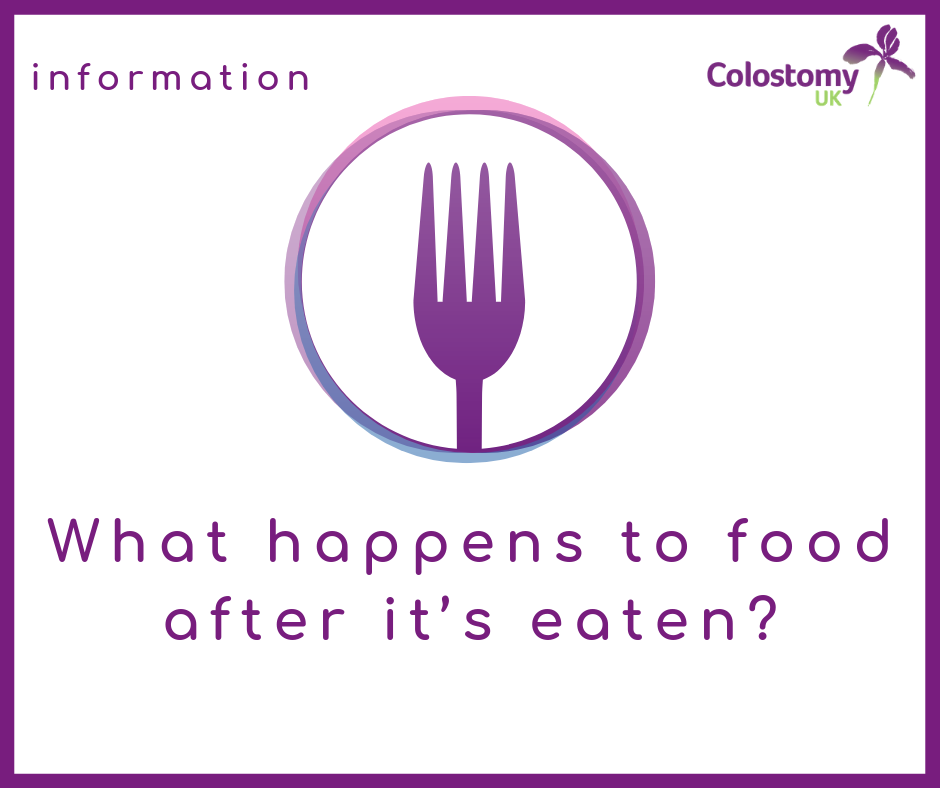What happens to food after it’s eaten?
31 July, 2019

Many people who have had colostomy surgery may wonder what if their eating habits need to change. Here is a brief overview of what happens to your food after it’s eaten…
Each mouthful of food takes about six seconds to reach the stomach, where it can stay for anything from a few minutes to several hours.
Once the food has been thoroughly mixed with gastric juices and churned by the stomach it is squirted in small amounts into the small bowel (the ileum). As the food passes through, it is digested through the addition of chemicals and enzymes.
By the time the food reaches the end of the small bowel (which is around six metres in length) it has been almost entirely digested; what remains is largely waste matter, salt and water.
The waste matter continues into the large bowel (the colon). This measures
around 1.5 metres. In the colon, bacteria work to ferment the residue of food. The colon has an important function absorbing salt and water, thus producing a firmer more formed faecal output.
As food has been almost completely digested by the time it reaches the colon, having a colostomy does not mean you will have to change what you eat. It is not necessary to follow a special diet (unless you have been advised to do so by your doctor for another medical condition).
Colostomy UK have produced a full information booklet all about healthy eating following stoma surgery. Please not guidance for people who have had ileostomies and urostomies will differ.





